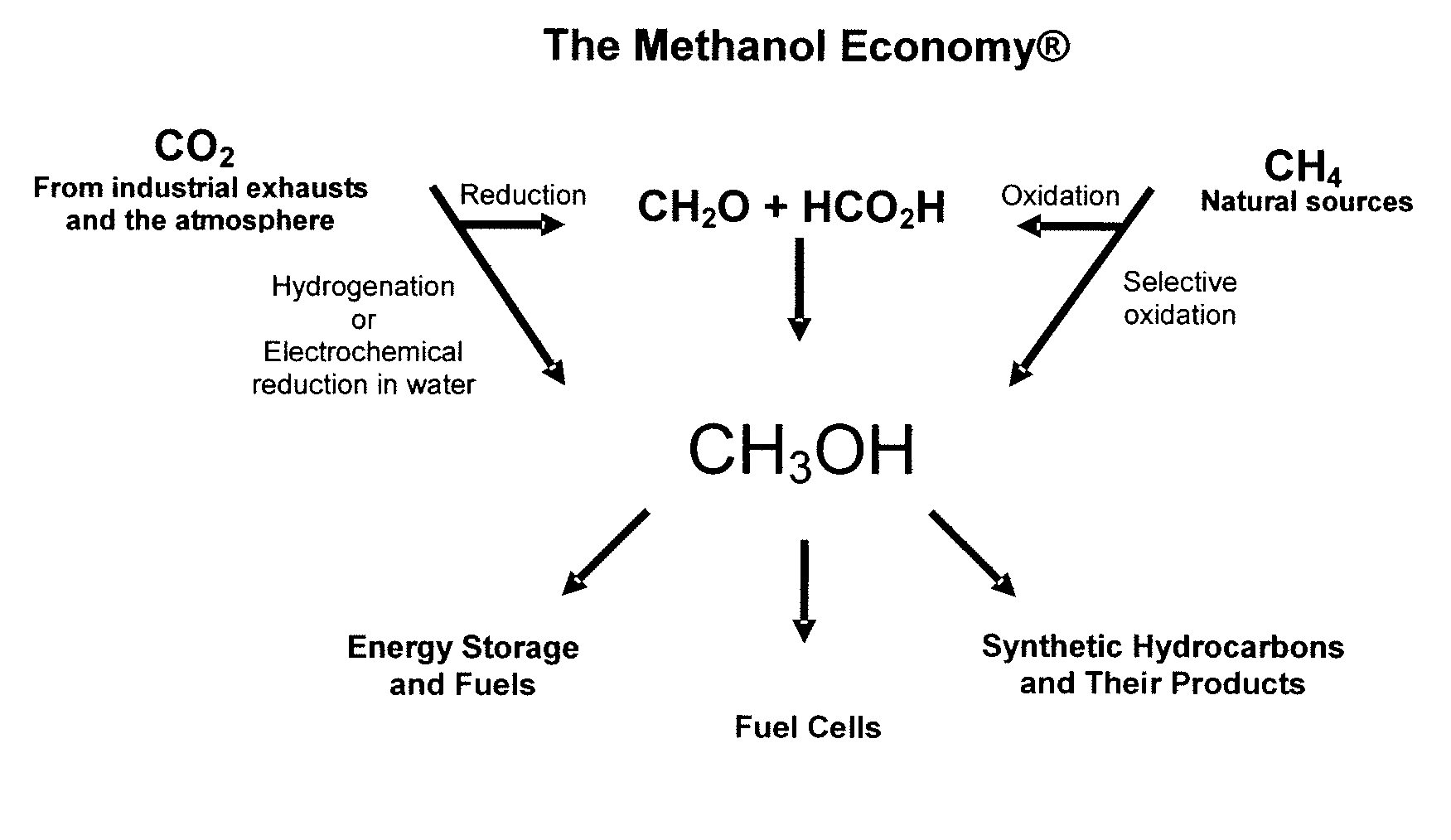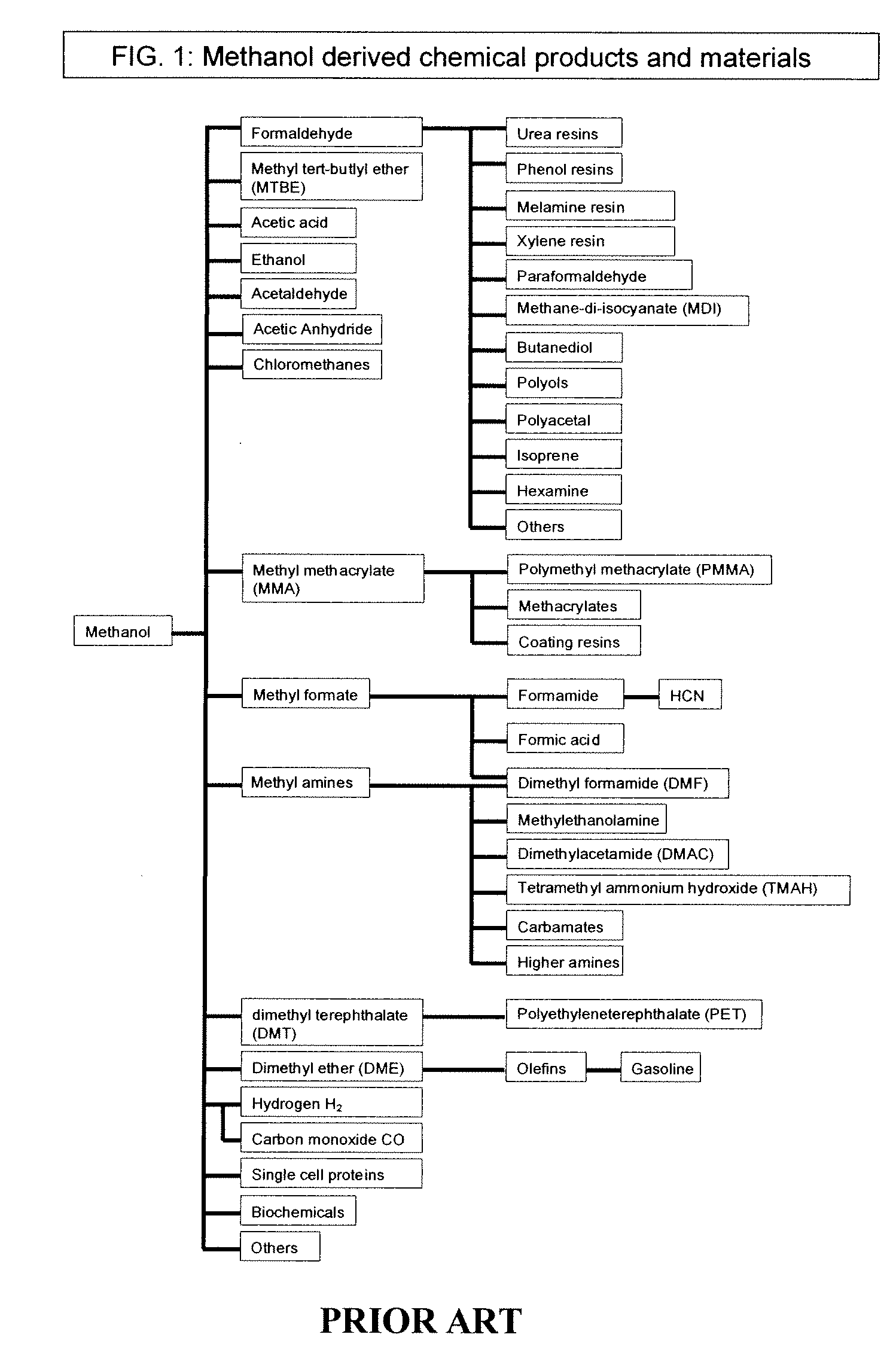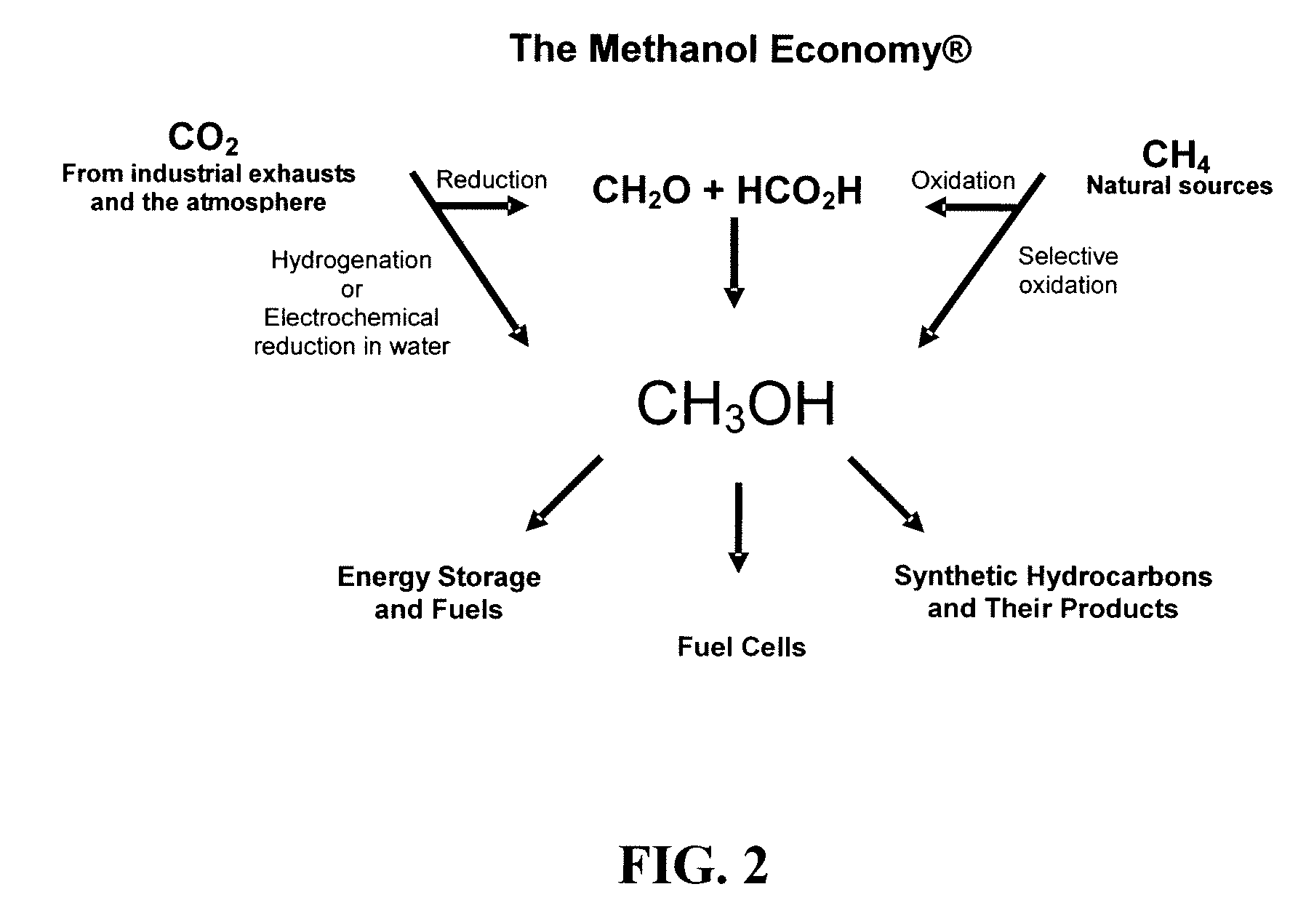Electrolysis of carbon dioxide in aqueous media to carbon monoxide and hydrogen for production of methanol
a technology of carbon monoxide and methanol, which is applied in the direction of electrolytic organic production, energy input, and oxygen-containing compound preparation, etc., can solve the problems of reducing the production efficiency of methanol
- Summary
- Abstract
- Description
- Claims
- Application Information
AI Technical Summary
Benefits of technology
Problems solved by technology
Method used
Image
Examples
example 1
[0075]In a divided electrochemical cell, using tetrabutylammonium halides, preferentially tetrabutylammonium bromide as the electrolyte over gold electrode (cathode) in aqueous methanol medium at either −1.5V or −4V vs. Ag / AgCl reference electrode, CO2 is reduced and water is electrolyzed to an optimal 1:2 mixture of CO and H2 at the cathode. Pure oxygen as well as some bromine is produced at the anode.
example 2
[0076]In a divided electrochemical cell, using, aqueous 0.1M KHCO3 as the electrolyte CO2 is reduced at the gold cathode at −3.2V vs. Ag / AgCl reference electrode CO2 is reduced and water is electrolyzed to an optimal 1:2 mixture of CO and H2 suitable for methanol synthesis. The total faradaic efficiences for CO and H2 production add up to 100%. Pure oxygen is produced at the anode.
PUM
| Property | Measurement | Unit |
|---|---|---|
| Electric potential / voltage | aaaaa | aaaaa |
| Pressure | aaaaa | aaaaa |
| Ratio | aaaaa | aaaaa |
Abstract
Description
Claims
Application Information
 Login to View More
Login to View More - R&D
- Intellectual Property
- Life Sciences
- Materials
- Tech Scout
- Unparalleled Data Quality
- Higher Quality Content
- 60% Fewer Hallucinations
Browse by: Latest US Patents, China's latest patents, Technical Efficacy Thesaurus, Application Domain, Technology Topic, Popular Technical Reports.
© 2025 PatSnap. All rights reserved.Legal|Privacy policy|Modern Slavery Act Transparency Statement|Sitemap|About US| Contact US: help@patsnap.com



